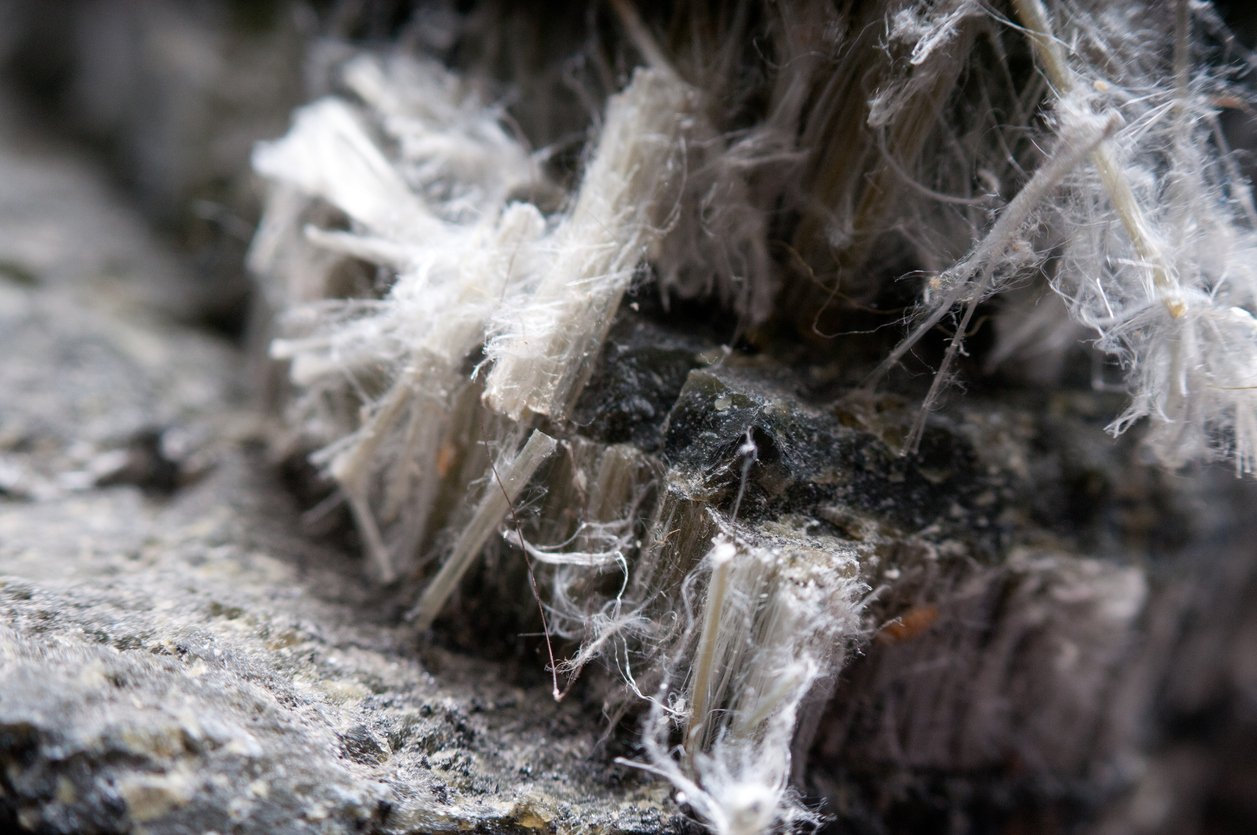Asbestos in Construction
Date Posted: 10/24/2023
Around 5,000 people from all industries die from asbestos-related diseases every year. According to the Washington State Department of Health, asbestos is a mineral fiber found in rocks and soil. It was once widely used in building materials and products to strengthen them and provide heat insulation and fire resistance. It is still used in some products today. When it is intact and undisturbed, asbestos-containing materials do not pose a health risk. However, if asbestos-containing materials are damaged, disturbed, or deteriorate over time, there is a health risk because the microscopic fibers can get into the air and can be inhaled into the lungs.
Basics of Asbestos
Asbestos is commonly mixed or combined with other materials known as asbestos-containing materials or ACM. Something is an ACM if it contains more than one percent asbestos, as determined by a testing method as determined by an approved testing lab. Construction workers must be aware that asbestos is hazardous and that the primary route of exposure is through breathing in disturbed asbestos fibers. Prior to starting any work, a good faith inspection (GFI) should be completed and posted on the job site.
Effects of Asbestos
Asbestos is well recognized as a health hazard, and its use is now highly regulated by both OSHA and EPA. Asbestos fibers associated with these health risks are too small to be seen with the naked eye. Breathing asbestos fibers can cause a buildup of scar-like tissue in the lungs called asbestosis and result in loss of lung function that often progresses to disability and death. Asbestos also causes lung cancer and other diseases, such as mesothelioma of the pleura, which is a fatal malignant tumor of the membrane lining the cavity of the lung or stomach. Epidemiologic evidence has increasingly shown that all asbestos fiber types, including the most used form of asbestos, chrysotile, cause mesothelioma in humans. Three of the significant health effects associated with asbestos exposure are:
Lung cancer.
Mesothelioma, a rare form of cancer that is found in the thin lining of the lung, chest, abdomen, and heart.
Asbestosis, severe progressive, long-term, non-cancer disease of the lungs.
How Can You Get Exposed to Asbestos in the Workplace?
Asbestos fibers are released into the air during activities that disturb asbestos-containing materials. The asbestos fibers can then be inhaled without knowing and trapped in the lungs. If swallowed, they can become embedded into the digestive tract as well. It is estimated that there are over 3,000 products that potentially contain asbestos, including some new construction materials that are still produced today. Plumbers, carpenters, and electricians working on building repairs are considered most at risk. Common materials in construction where asbestos may be found include, but are not limited to:
Boilers, plant, and pipework hidden in or under floor ducting.
Attic and wall insulation products.
Vinyl floor tiles and the backing on vinyl sheet flooring and adhesives.
Roofing and siding shingles.
Textured paint and patching compounds used on walls and ceilings.
Walls and floors around wood-burning stoves protected with asbestos paper, millboard, or cement sheets.
Hot water and steam pipes coated with an asbestos material or covered with an asbestos blanket or tape.
Oil and coal furnaces and door gaskets with asbestos insulation.
Heat-resistant fabrics.
Construction adhesives and caulking.
Asbestos cement products like corrugated roofing and cladding sheets of buildings.
How Can You Protect Yourself from Asbestos Exposure in the Workplace?
Before starting work, ask if the materials that will be installed, demolished, or repaired contain asbestos and request to see the good faith survey (GFI), which should include the AHERA certification.
Be trained to recognize the places and materials where asbestos may be found. Typically, this is asbestos awareness training, which is training for workers who might encounter asbestos during their work. This would include almost all construction workers.
Avoid handling or disturbing asbestos.
Use a certified asbestos abatement contractor to remove asbestos from the work area. Below are tasks that only a certified asbestos abatement contractor should do:
Isolate and contain work areas with temporary barriers or enclosures to avoid spreading fibers. Use local exhaust ventilation equipped with HEPA filter dust collection systems. Ventilation of the regulated area should move contaminated air away from the breathing zone of employees and toward a filtration or collection device equipped with a HEPA filter.
Use wet methods, if feasible, to reduce exposure.
Never use compressed air for cleaning. Instead, vacuum cleaners equipped with HEPA filters collect all debris and dust.
Clean up and disposal of waste in leak-tight containers (except in roofing operations).
Avoid dry sweeping, shoveling, or other dry clean-up methods.
Use disposable protective clothing or clothing that is left in the workplace. Do not launder work clothing with family clothing.
Use proper respiratory protection.
Dispose of waste and debris contaminated with asbestos in leak-tight containers in accordance with OSHA and EPA standards.
Note: If you come across a material that you believe may contain asbestos, DO NOT DISTURB IT! Leave it where you found it and report immediately to the site supervisor, superintendent, or manager.
Resources
Asbestos | Washington State Department of Health
https://www.lni.wa.gov/safety-health/safety-topics/topics/asbestos
Asbestos - Overview | Occupational Safety and Health Administration (osha.gov)


